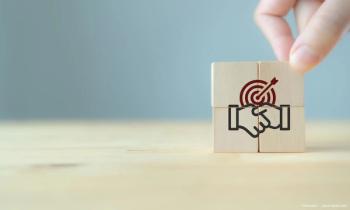
‘She Sees’ initiative promotes gender equity in eye health
Charity seeks to raise $US20 million to address avoidable blindness in women, girls
Learn more by visiting these sites:
She Sees Initiative www.hollows.org/shesees
Restoring Women’s Sight Report www.hollows.org/Upload/FHF/Media/2018-She-Sees-EUI.pdf
Consider these scenarios.
Exacerbating the problem, 90% of women who are blind are
Closing the gap
With these statistics-courtesy of the Australian-based international development organization, The Fred Hollows Foundation-the group is drawing attention to the problem and focusing on closing that gap with a new global initiative called “She Sees.”
The She Sees initiative has at its heart the belief that women have an equal right to sight. The foundation-which was formed 26 years ago by the late eye surgeon, Fred Hollows, MD, and his wife, Gabi-works in more than 25 countries and has restored sight to more than 2.5 million people around the world.
It registered in the United States last year and is funded through the generosity of public donations as well as international development agencies such as USAID (www.usaid.gov).
The organization’s aim is simple-to end avoidable blindness. It does that by working in developing countries with local partners and training local doctors, nurses, community health workers, and teachers to strengthen the health systems and provide comprehensive eye care to some of the poorest and most marginalized people.
The foundation has witnessed the disparity in access to care for women and girls and decided to do something about it. Before creating the She Sees initiative, the foundation commissioned a landmark global report, Restoring Women’s Sight, prepared by the Economist Intelligence Unit.
The report is a flagship study into why women are more likely to be blind and the impacts of women being disproportionately represented in the statistics.
Some of the key reasons affecting women’s eye health include:
- Biology
Women generally live longer so they are more likely to experience some eye diseases like cataract.
- Cost
The treatment of men, who are more often the main income earners in developing countries, is prioritized. Women who do not have their own income and decision-making power may also face further barriers.
- Cultural factors
In many countries, women are unable to travel to medical appointments unaccompanied, reducing the access to services.
- Women are carers
Women are twice as likely as men to be blinded by trachoma because it passes from children to mothers.
Vision impairment and blindness have far-reaching implications not just for the women affected, but also for their families, and for progress toward many of the sustainable development goals, such as gender equality, and decent work and economic growth.
The Economist Intelligence Unit report looked at the social implications of blindness, the psychological well-being, the income earning potential, and on women’s capacity to participate actively in society.
The findings provide a way forward for closing the gender gap and ensuring women have better access to services. Through the She Sees initiative, the organization is determined to advance its gender-focused work and help deliver high-quality programs that work to close the gender gap in blindness around the world.
As a leader in affordable, accessible eye care, the foundation’s goal is to end gendered discrimination in eye health and to empower women and girls with sight. The foundation has developed a multifaceted approach to this, starting with placing women and girls firmly at the center of programs, services, partnerships, and global advocacy work. It wants to ensure all women and girls can access eye health care and can effectively engage with services.
Where work, live
On top of that, the organization is developing creative programs specifically reaching out to women where they work and where they live. An example of this is in Pakistan and Bangladesh where the foundation is working with local hospitals and health agencies to train outreach health workers who deliver maternal and child health services in eye care, so they can find and direct women and children with eye health issues to local services.
The foundation is also training more women as health workers because in many regions women are more likely to access services when they are run by women. The organization has also set up vision corners and eye programs in Bangladeshi garment factories and in cottage industries in countries such as Vietnam.
By taking programs to places where so many women work it means they can access eye care easily which allows them to continue to earn an income to support their children and families.
The foundation is committed to empowering women and ensuring women are represented in leadership positions across all eye health workforce groups, and it encourages others in the eye health sector to also help address the issue to change the lives of women and girls and help break the cycle of poverty caused by blindness and vision impairment.
Disclosures:
Ian Wishart
E: [email protected]
Wishart is chief executive officer of The Fred Hollows Foundation.
Newsletter
Don’t miss out—get Ophthalmology Times updates on the latest clinical advancements and expert interviews, straight to your inbox.













































